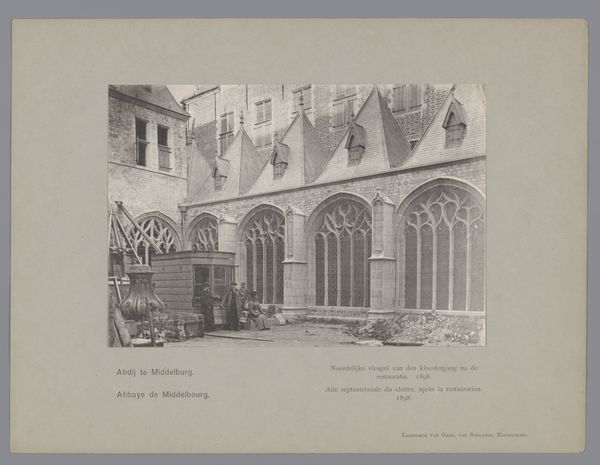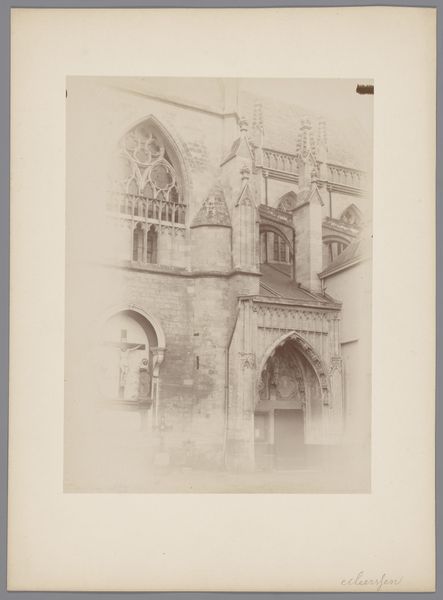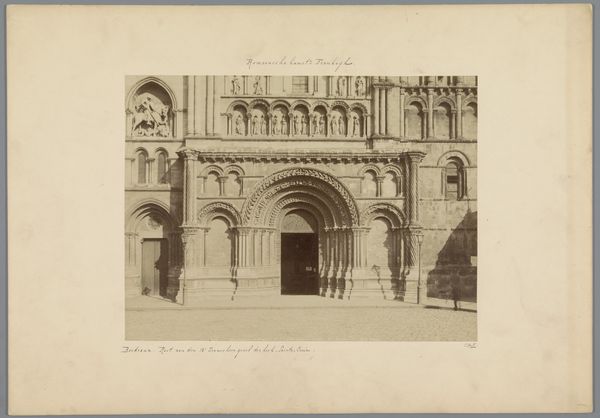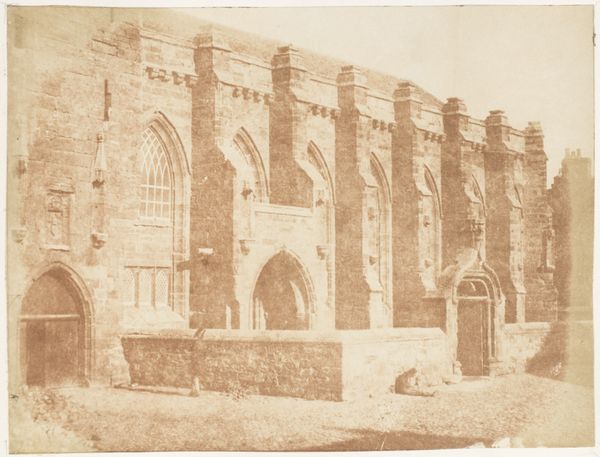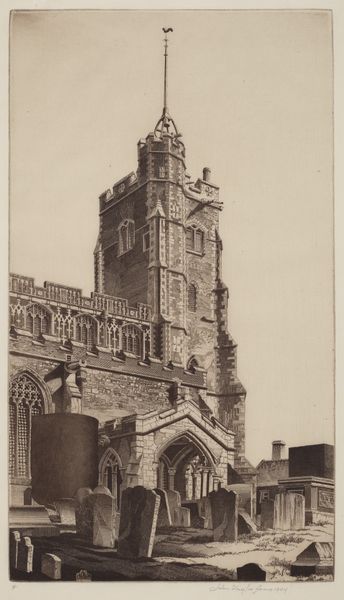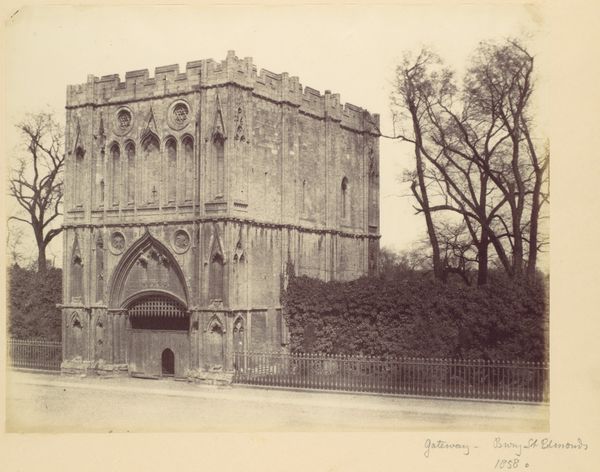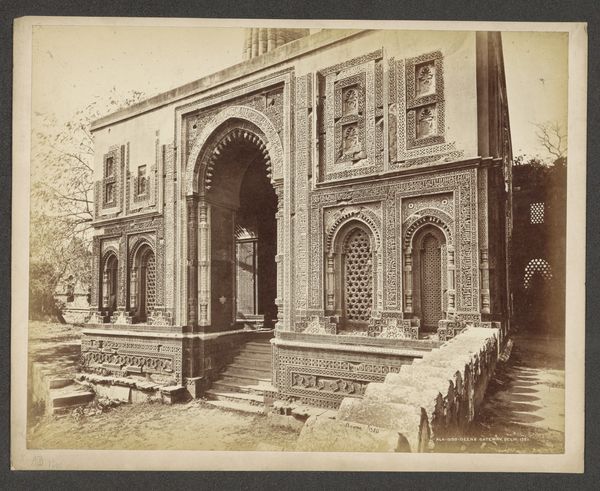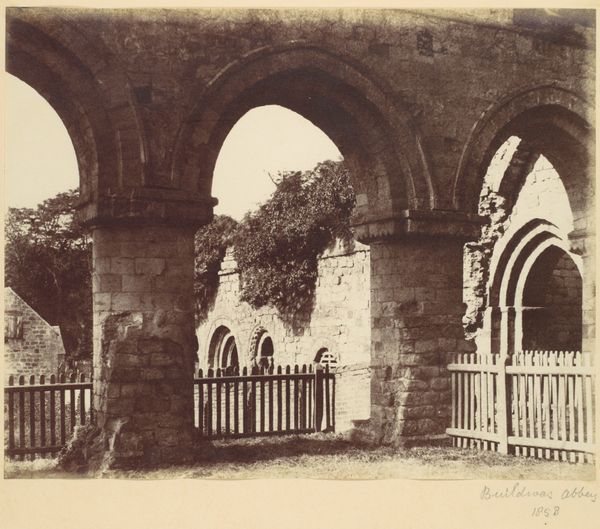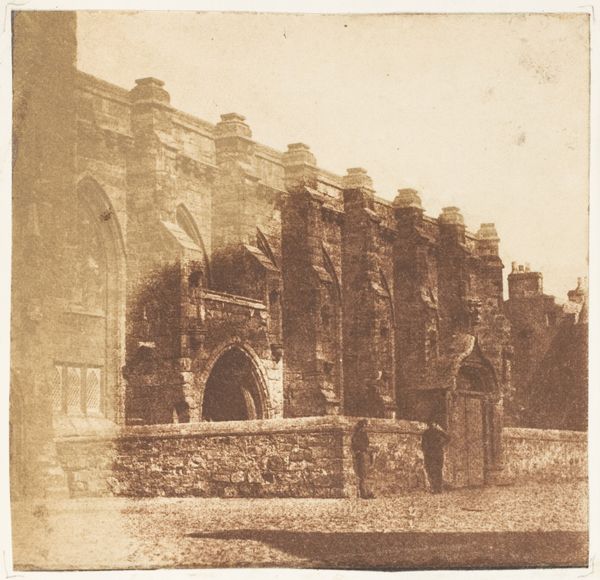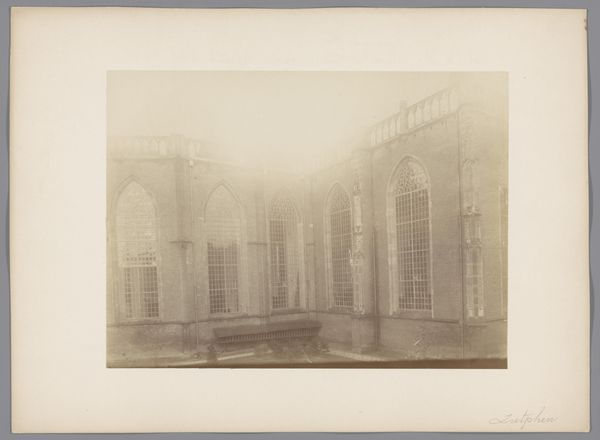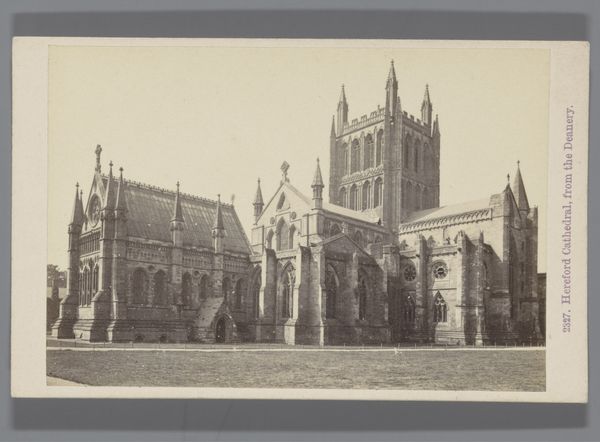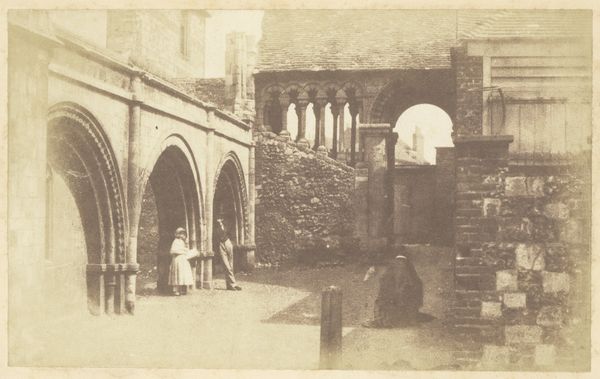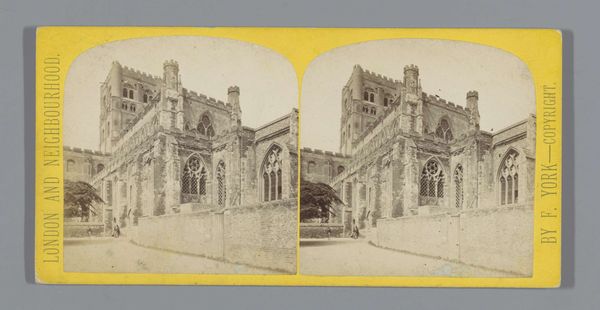
print, photography, gelatin-silver-print, architecture
#
16_19th-century
# print
#
landscape
#
photography
#
gelatin-silver-print
#
19th century
#
cityscape
#
architecture
Dimensions: height 64 mm, width 101 mm
Copyright: Rijks Museum: Open Domain
Editor: We’re looking at “Kloostergang van de kathedraal van Hereford,” a gelatin silver print from somewhere between 1856 and 1894, by Francis Bedford. It's a detailed view of a cloister. There's a peaceful, somewhat melancholic feeling that it gives me. What symbols or historical threads do you see woven into this image? Curator: I see echoes of faith and community intertwined with a very particular kind of British visual language. Consider the cloister itself, a space for reflection, but look at how Bedford captures it. Do you notice how the strong geometric lines, like the pointed arches, practically scream "Gothic Revival"? Editor: Yes, the pointed arches and the intricate stonework are pretty striking! Curator: Exactly. It suggests a longing for a medieval past, infused with Victorian sensibilities. The cathedral's architecture is more than stone and mortar; it’s an attempt to rebuild an idea. It is as if to physically solidify ideals and cultural narratives that are themselves relics from the past. Note too how the human figures look posed, perhaps staged within the scene. Editor: That's interesting. What narrative might be present there? Curator: They appear almost as placeholders—figures inserted to validate our contemporary vision. Is that the historical perspective? How might contemporary eyes perceive those very clear allusions of that era? Editor: I suppose there is something poignant in recognizing cultural echoes repeating throughout time. Thank you! Curator: Yes, this dance between eras lets us contemplate how places maintain meanings and change across time. It truly prompts one to reflect on time's impact on human memory!
Comments
No comments
Be the first to comment and join the conversation on the ultimate creative platform.
